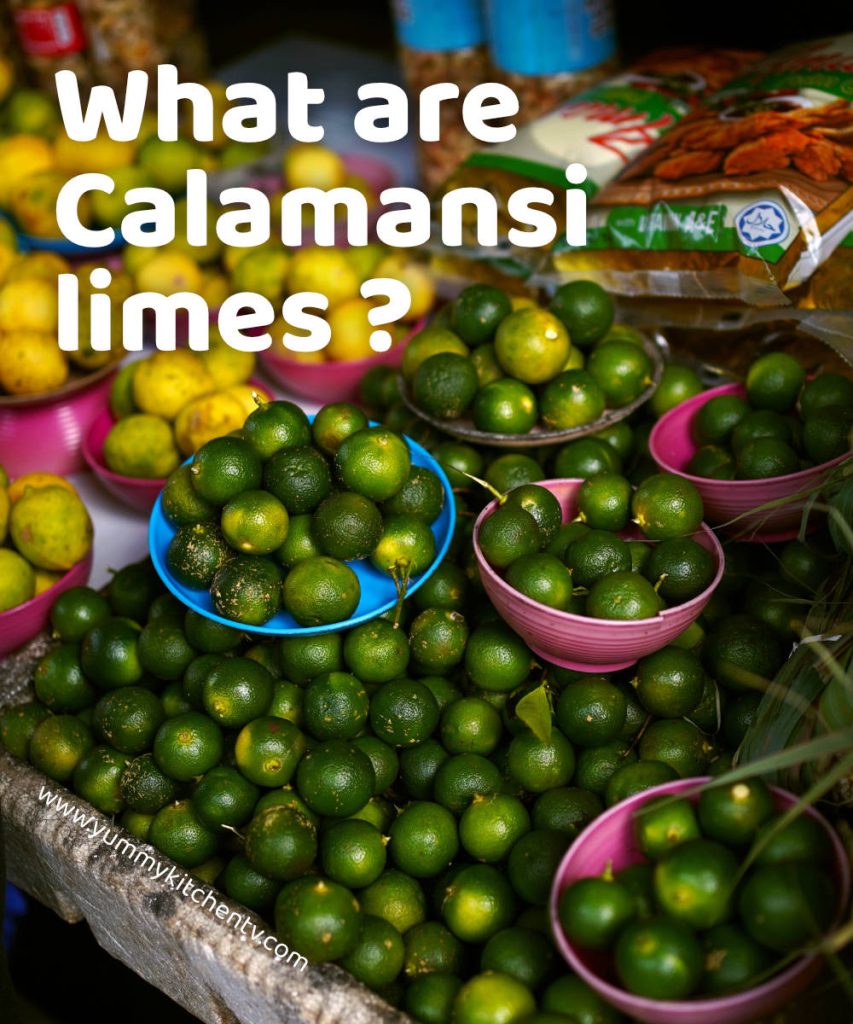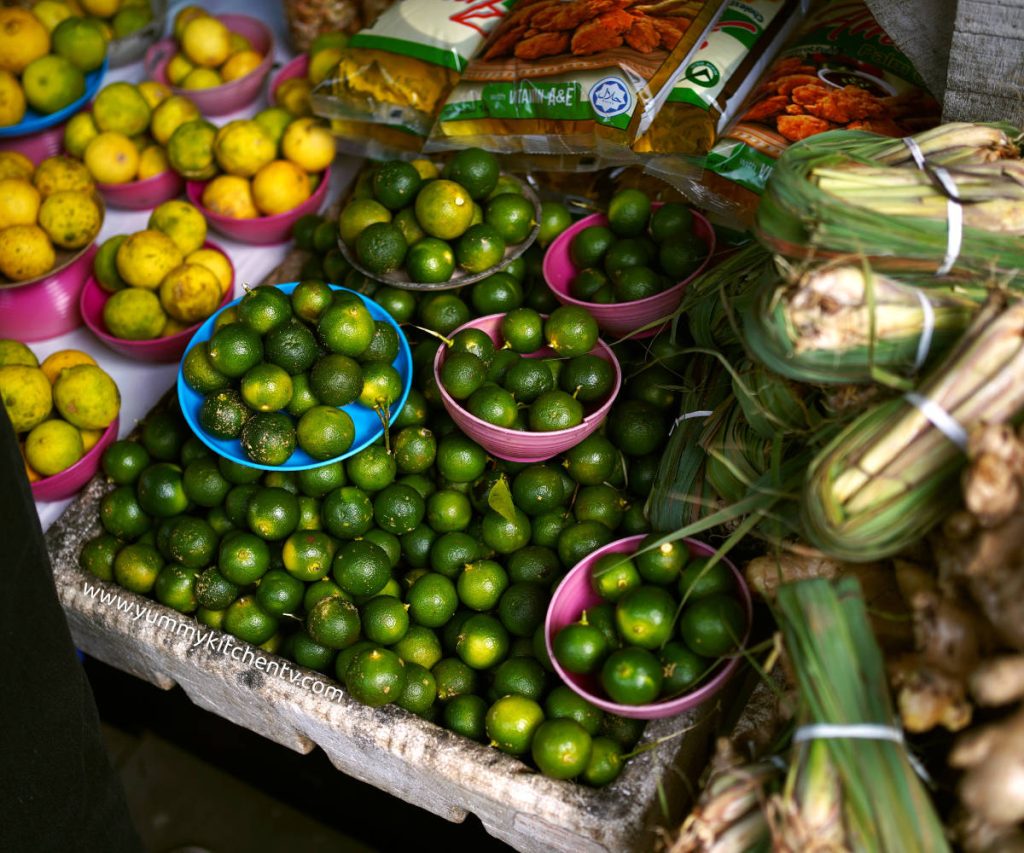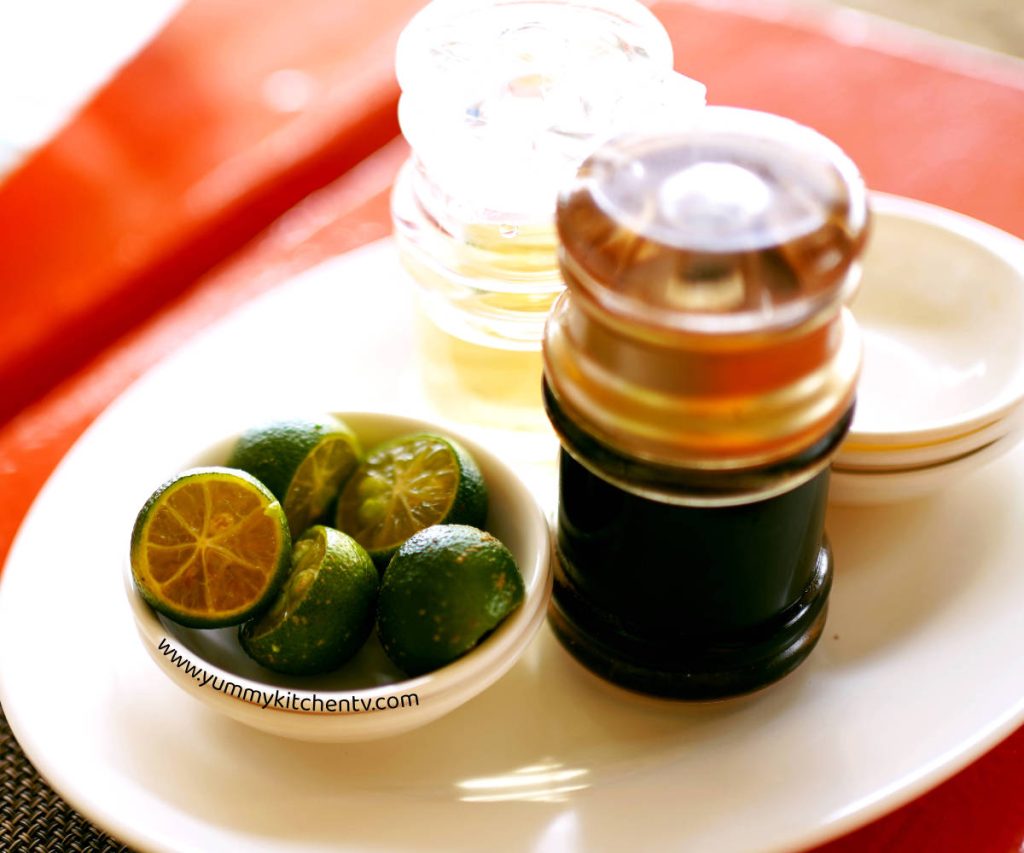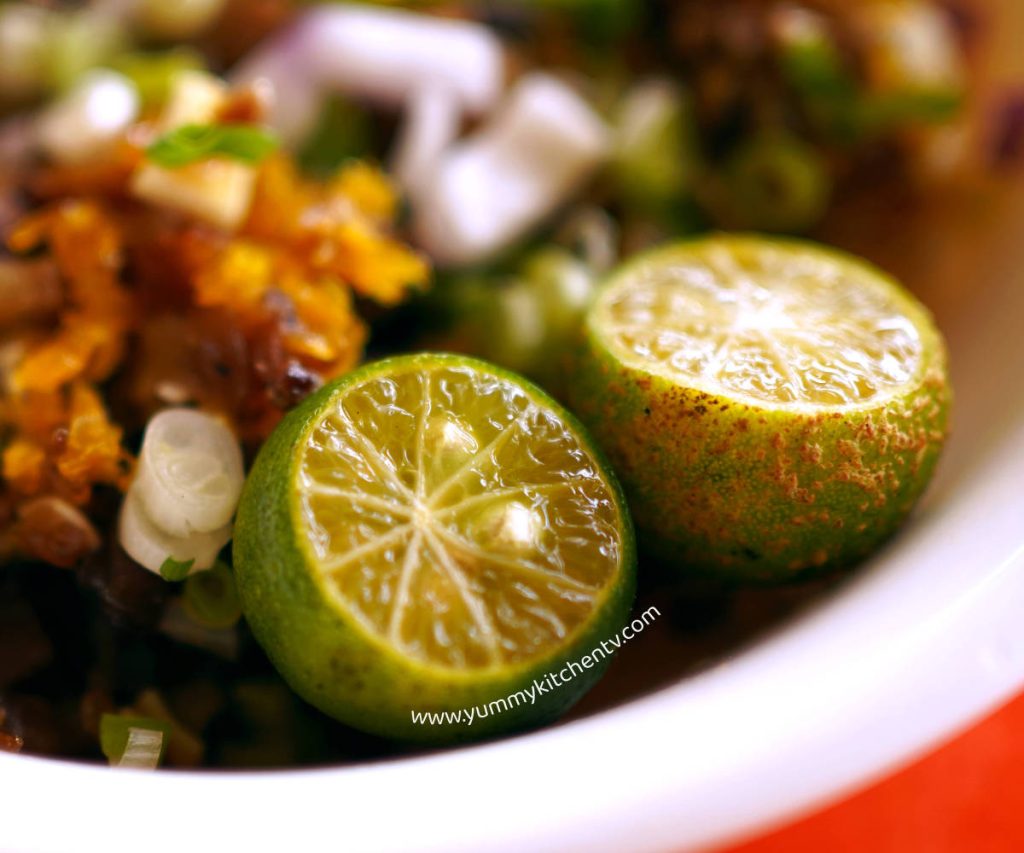What are Calamansi Limes?
Calamansi limes are small natural citrus fruit popular in the Philippines and throughout Southeast Asia also known as known as the Philippine Lime or Philippine lemon. They are used as flavoring ingredients in marinades, as preservatives, to garnish or the piece de resistance to sweet and savory dishes. They have a sour, tart flavor and brightens the dish with it’s naturally sweet and sour citrusy flavor.

A Brief History Calamansi Limes
This Golden lime or ‘Calamondin’, is known as the Philippine Lime. Is said to be cross-pollinated between an orange from the citrus family and a kumquat. Being indigenous to the Philippines, this small, juicy green, or sometimes ripened till yellow fruit is tart, sweet, with a unique blend of flavor in between a lime and mandarin, with floral notes. Full of nutritional goodness, this fruit is grown throughout southeast Asia and widely used in local cuisines especially in Malaysia and Philippines.
The Calamansi tree can thrive in almost any environment, these mini limes are used for food, savory or sweet, for cleaning household items, and even added into skincare, or used straight on the body.

Calamansi in the Culinary world
While calamansi limes or calamansi aren’t just a miniature version of your usual limes. These are well known to be drunk as a juice, or in the Philippines, its lovingly added into marinades and especially in ‘sawsawan; or dipping sauces. Like many citrus fruits, these are interchangeable with other similar citrus to fit dishes or desserts that need a bit of acidity but are still sweet and mild at the same time. From marinating into meats to tenderize them, to adding into dipping sauces to liven it up and help take away any oiliness the main dish might have, hot and cold drinks, jams, purees, candies, toppings squirted over noodles like pancit bihon, your usual pancit canton, palabok, or even over rice dishes like congee or ‘arroz caldo’, and over Filipino meat dishes like sisig, fried fish, or siomai to give them a slight tang to brighten the dish, substitutes for key lime pies, citrus cakes, cupcakes and other desserts, giving it a slightly flowery taste.
Calamansi Benefits
A number of Calamansi diluted in water adding a tablespoon or so of sugar or honey, and turned into juice, is such a simple but effective way to get all the health benefits you can take in this little fruit. Here are some examples of what this mini citrus can do for you:
- While being a strong citrus fruit, it soothes acidity and helps with weight lost, and metabolism.
- Manages blood sugar which helps control diabetes.
- Is strong in Vitamin C, boosting energy and promotes collagen in the body.
- Lowers cholesterol, leading to better heart health.
- Strengthens immunity, fights inflammation.
- Great for the common cold, a hot mug of calamansi keeps the mucus and phlegm at bay.
Calamansi uses, for skin care and the home
Aside from benefiting from consuming calamansi, there are also other uses to it, physically.
- These can be used to reduce body odor when added into bath water.
- Citruses are used in soap or skin care products for whitening and brightening. With others using the fruit itself, rubbing it directly onto dark areas of the body.
- Toners that have a slight mix of calamansi or other citruses are good for people with oily skin, as it regulates sebum secretion, giving a blemish free, flawless complexion.
- Promotes hair growth, shampoos with this ingredient helps tighten the hair follicles which in turn reduces hair fall, it even reduces dandruff.
- Removes stain on clothes, rubbing this onto the stained area, can help remove juice stains. Even brightens clothes.
- Used as a homemade air freshener, that repels ants and cats.
- Use a citrus with rock salt, rubbing in on copper pots will make it sparkling clean.

Philippines, and it’s love affair with Calamansi
A kitchen staple of many Filipino households. Calamansi in English or ‘Kalamansi’ in Filipino, is one of the most important fruit crops of the Philippines. Being the 4th most grown fruit, behind the banana, mango, and pineapple. This fruit is native to the Philippines, it’s so easy to grow, this fruit can be found everywhere, from small to large supermarkets, wet markets, or neighborhood homes. You can probably bet that if there is enough space for one to plant some Filipino fruits or herbs, calamansi could be one of the first choices to plant. Snipped from the plant to be squeezed into a dip made of ‘toyo’ or soy sauce to make the popular ‘toyomansi’, or into a more ‘deluxe’ sauce mix with vinegar, soy sauce, chillies, tomatoes, garlic and onions. Or on cold days a dash or more with some hot water and honey keeps you warm and calm. They’re also great to use as a lemonade substitute, aka calamansi juice. These are more sweet and floral, make your own version by squeezing a number of calamansi till you get a 1/3 or 1/2 cup worth of juice, mixing it with sugar or honey, water, then add some ice for a refreshing summer cooler.
Following the superfood culture, the calamansi being one of the more accessible and inexpensive fruits, these can be seen sold as a bag or box of fruits, as puree or concentrate, or even frozen in juice form to make it easier to use and makes it better for exporting out of the country.The health benefits can rival your usual citrus fruits but even better the moderate acidity but still packing a punch to make the overall dish a boost. Make your dishes ‘brighter’ with a splash of calamansi.






